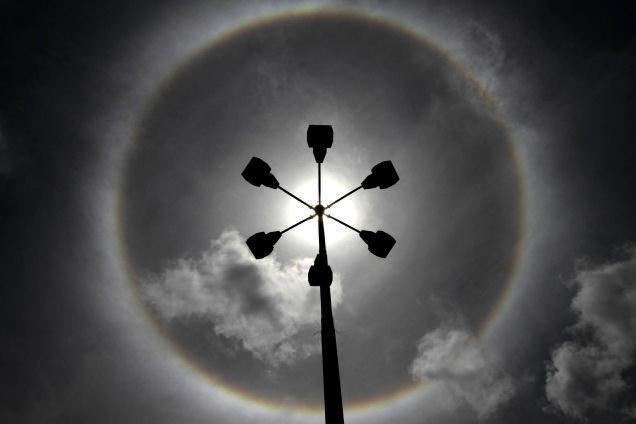
According to MP Birla Planetarium director (research & academic) Debiprosad Duari, the angular distance between the sun and the ring was almost 22'. "This celestial feature, that is sometimes known as 22' halo of the sun, occurs due to refraction of light against ice-crystals present in the thin wisp-like strands of clouds in the sky," he said.
The clouds, known as cirrus, are so extensive at times that they are virtually indistinguishable from one another, forming a sheet of cirrus called cirrostratus at altitudes of 5-10 km. The ice crystals formed in these clouds often take the shape of hexagonal crystals and sunlight passing through these gets refracted by an amount of 22', thereby causing the ring-like shape.
"If one noticed closely, one would have seen the ring was slightly redder in the inside and bluish on the outer edges. The area within the ring was also less brighter compared to other parts of the sky. This happens because the sunrays passing through these ice crystals on the cirrus clouds behave like prisms and deflect light by at least 22' and, hence, no light gets deflected within a region of 22'," Duari added.
Scientists have shown that the geometry of the ring or halo is such that its size is roughly 44 times the size of the sun. This natural phenomenon can happen anytime during the day if the sky is covered by cirrus clouds and the atmospheric conditions are right.



Comment: "Rare" sun halos appear to be on increase, lately. And there is a "dustier" reason for it than shiny ice crystals. Take a look at the following articles:
Have You Seen a Sun Halo in Your Area? North Carolina, US: Solar halo continues this afternoon...
Are Ice Crystals Really to Blame? US: Halo Appears Around The Sun Over The Central Savannah River Area
Build-up of cosmic material in the atmosphere? Indonesia: Mysterious halo around the sun sets people wondering
Spectacular sundogs and ice halo seen from Stockholm
Ghana: Halo Appears Around Sun
Swaziland: Panic Over Sun's Strange Appearance
Mysterious Sun Haloes
Our hypothesis is, that the sun is being refracted by the changed atmosphere. That is, a combination of possible comet dust loading and changes in the layers of the atmosphere.